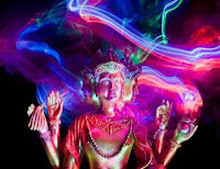 Meditation comes alive through a growing capacity to release our habitual entanglement in the stories and plans, conflicts and worries that make up the small sense of self, and to rest in awareness.
Meditation comes alive through a growing capacity to release our habitual entanglement in the stories and plans, conflicts and worries that make up the small sense of self, and to rest in awareness.
In meditation we do this simply by acknowledging the moment-to-moment changing conditions -- the pleasure and pain, the praise and blame, the litany of ideas and expectations that arise. Without identifying with them, we can rest in the awareness itself, beyond conditions, and experience what my teacher Ajahn Chah called jai pongsai, our natural lightness of heart.
Developing this capacity to rest in awareness nourishes concentration (samadhi), which stabilizes and clarifies the mind, and wisdom (prajna), which sees things as they are.
 We can employ this awareness or wise attention from the very start. When we first sit down to meditate, the best strategy is to simply notice whatever state of our body and mind is present. To establish the foundation of mindfulness, the Buddha instructs his followers "to observe whether the body and mind are distracted or steady, angry or peaceful, excited or worried, contracted or released, bound or free."
We can employ this awareness or wise attention from the very start. When we first sit down to meditate, the best strategy is to simply notice whatever state of our body and mind is present. To establish the foundation of mindfulness, the Buddha instructs his followers "to observe whether the body and mind are distracted or steady, angry or peaceful, excited or worried, contracted or released, bound or free."
Observing what is so, we can take a few deep breaths and relax, making space for whatever situation we find. From this ground of acceptance we can learn to use the transformative power of attention in a flexible and malleable way. Wise attention -- mindfulness -- can function like a zoom lens. Often it is most helpful to steady our practice with close-up attention. More























































































































































































































































No comments:
Post a Comment